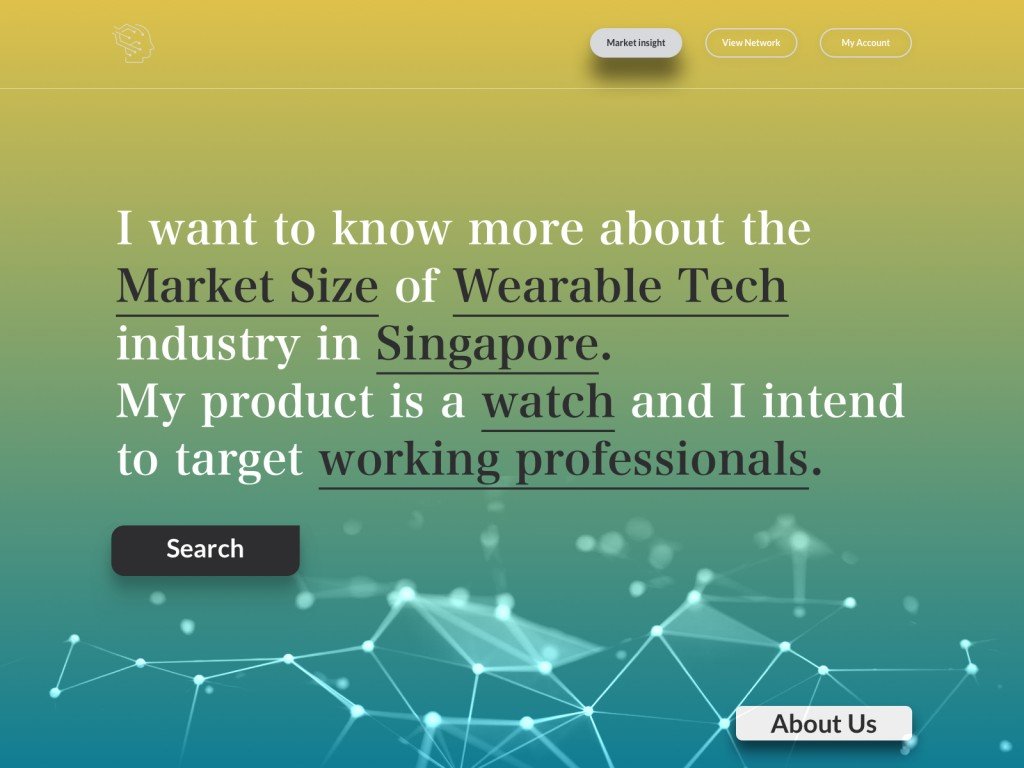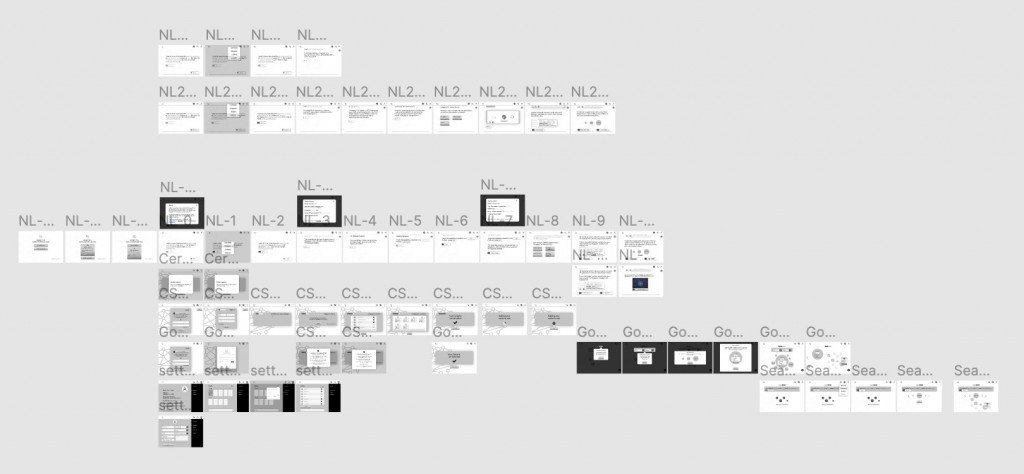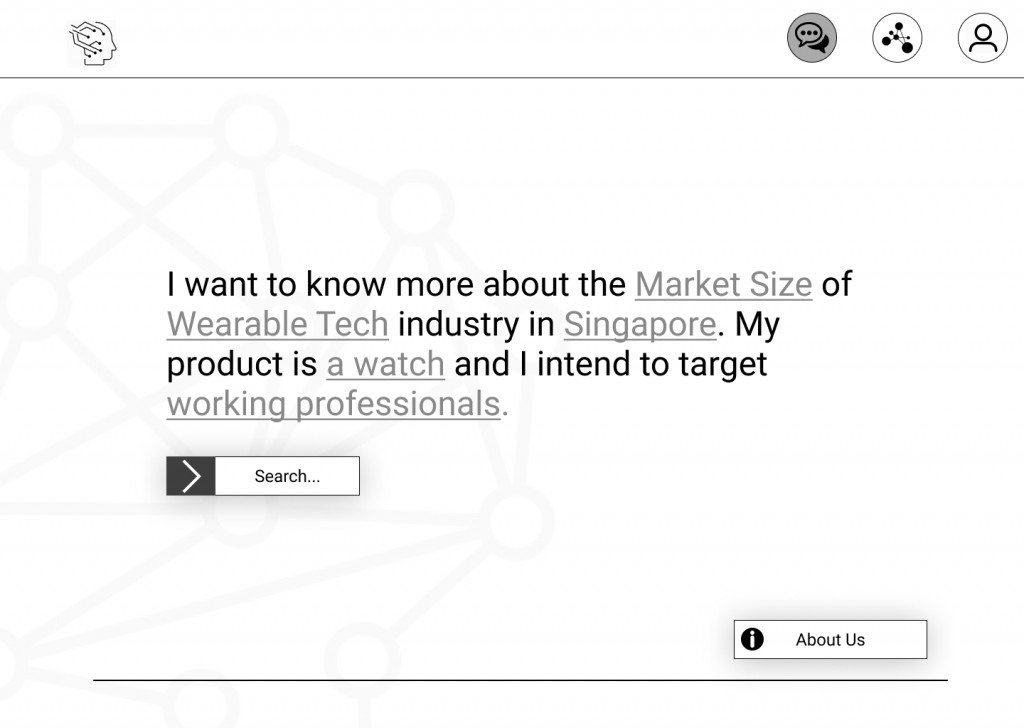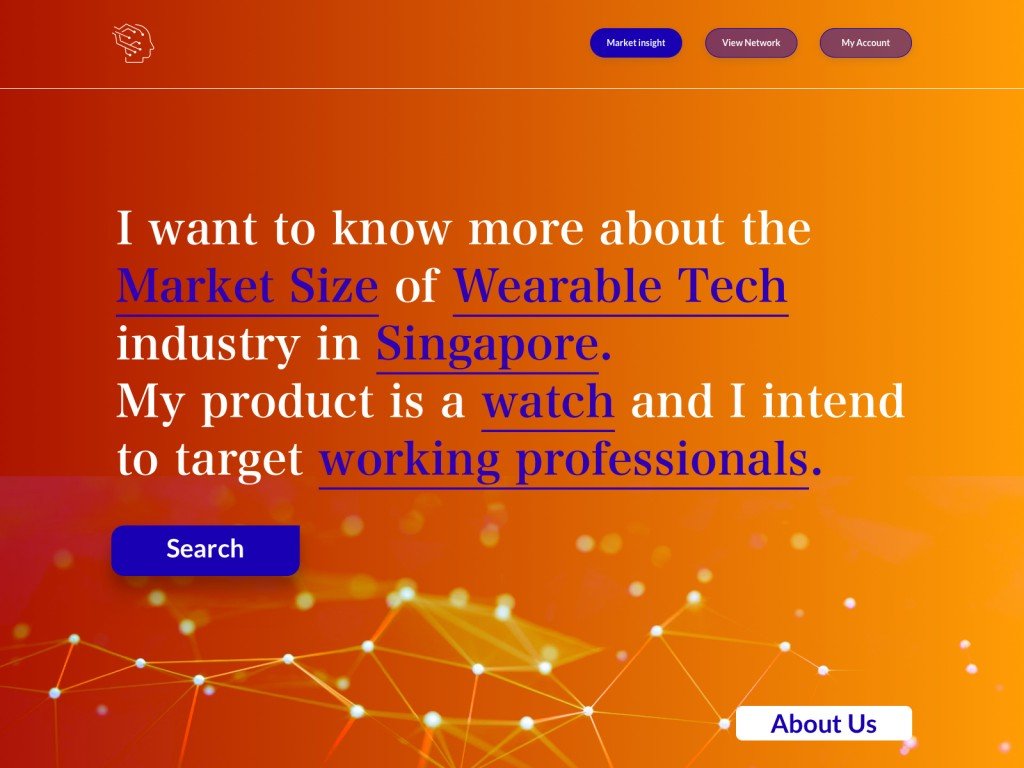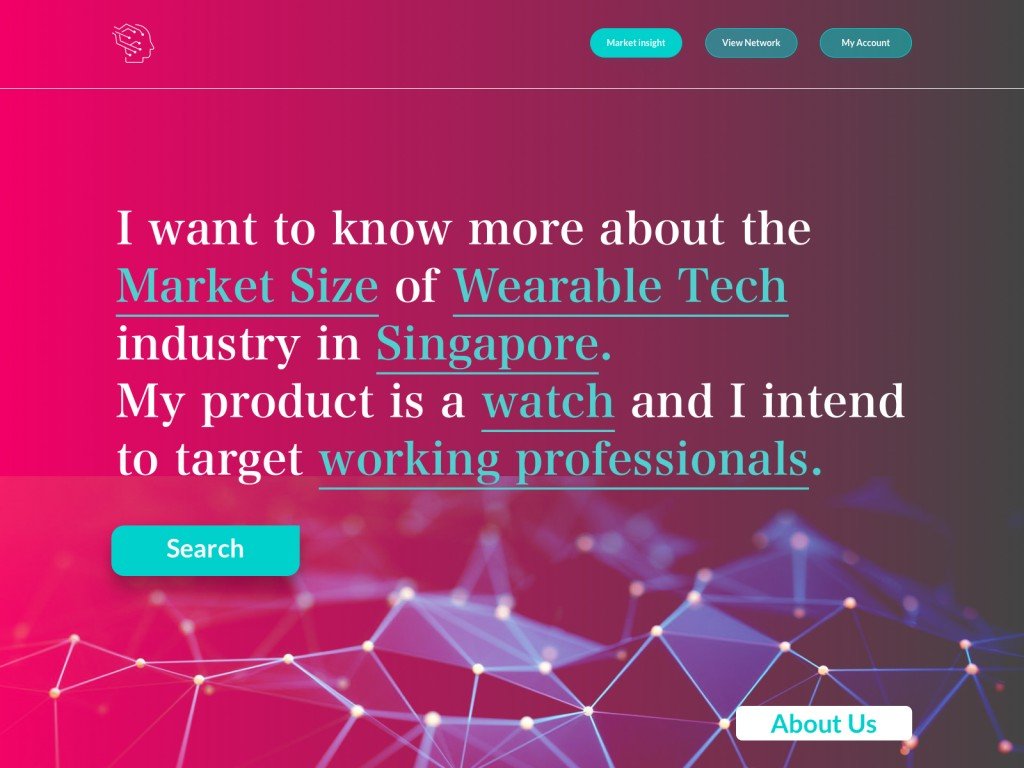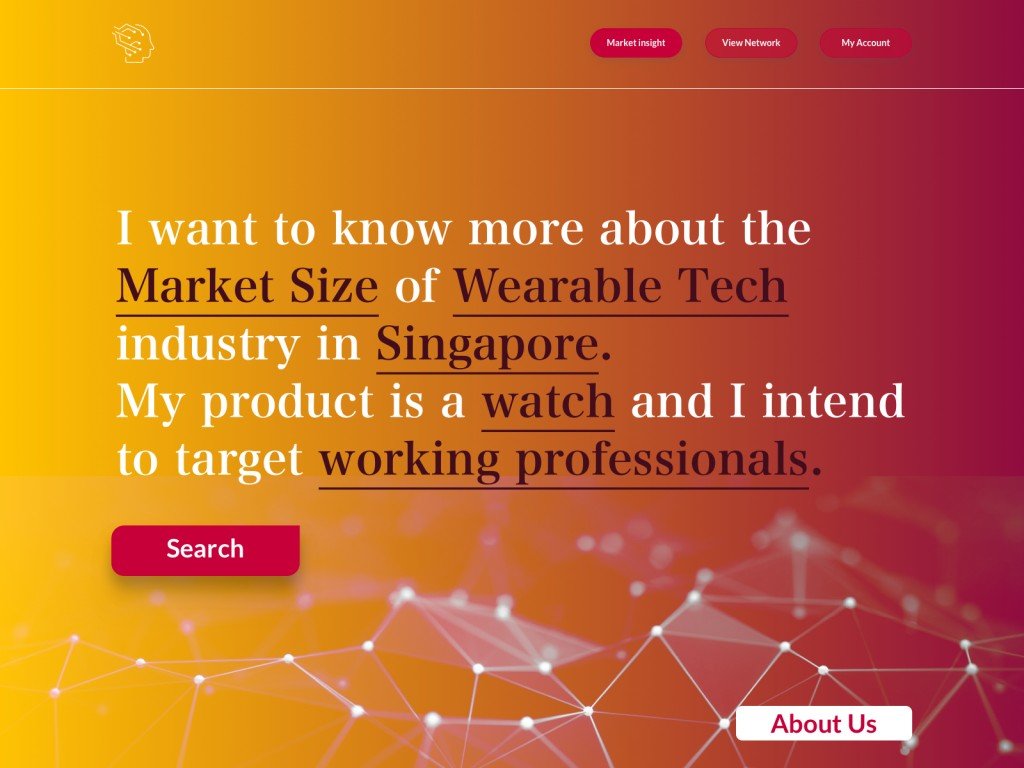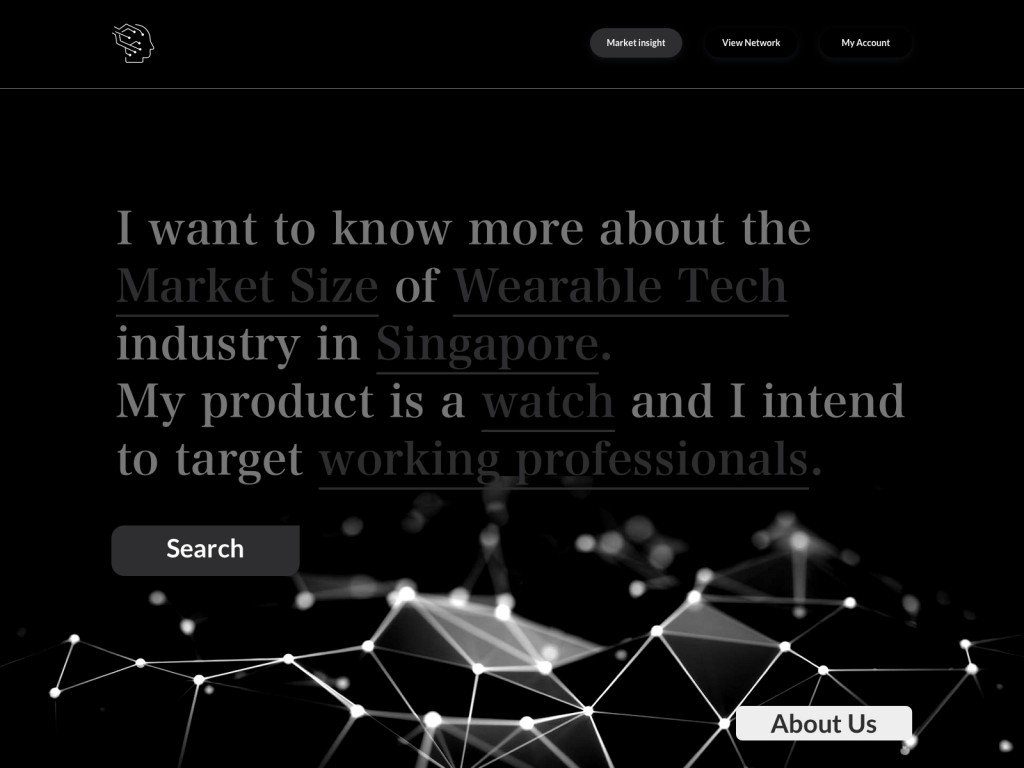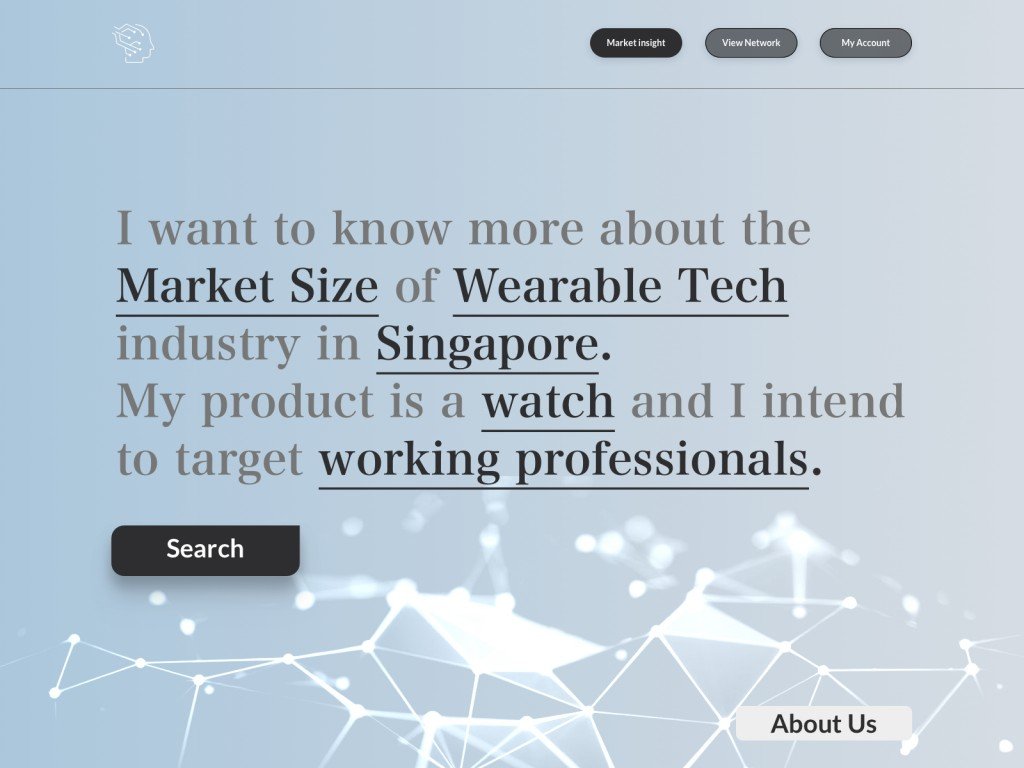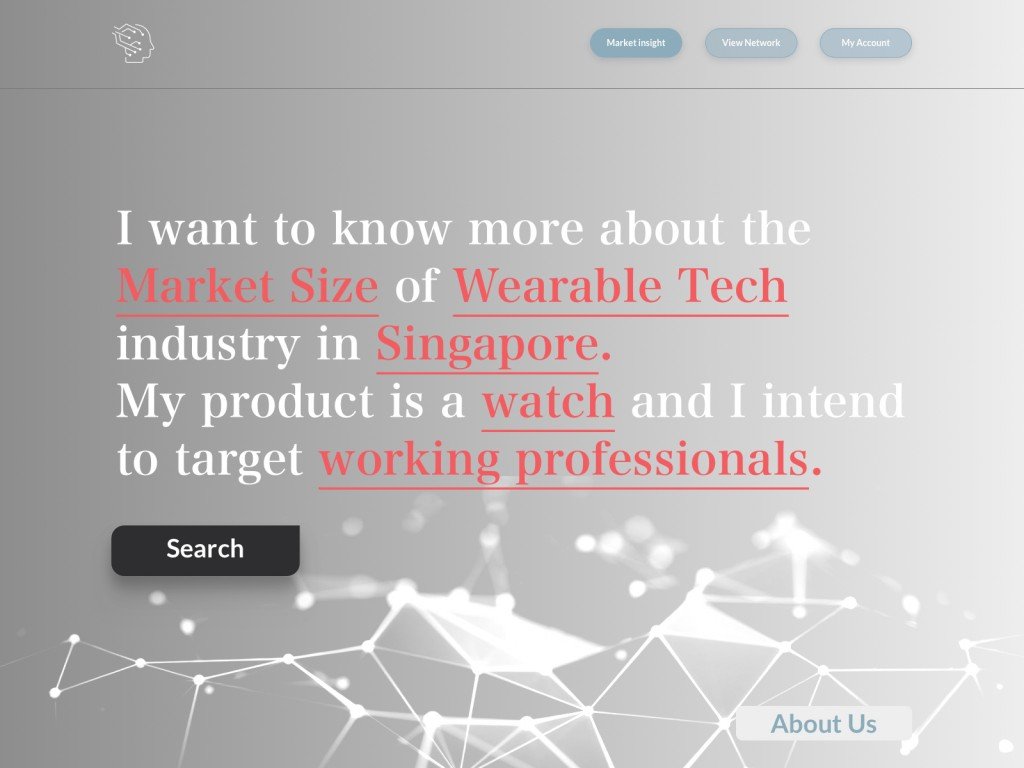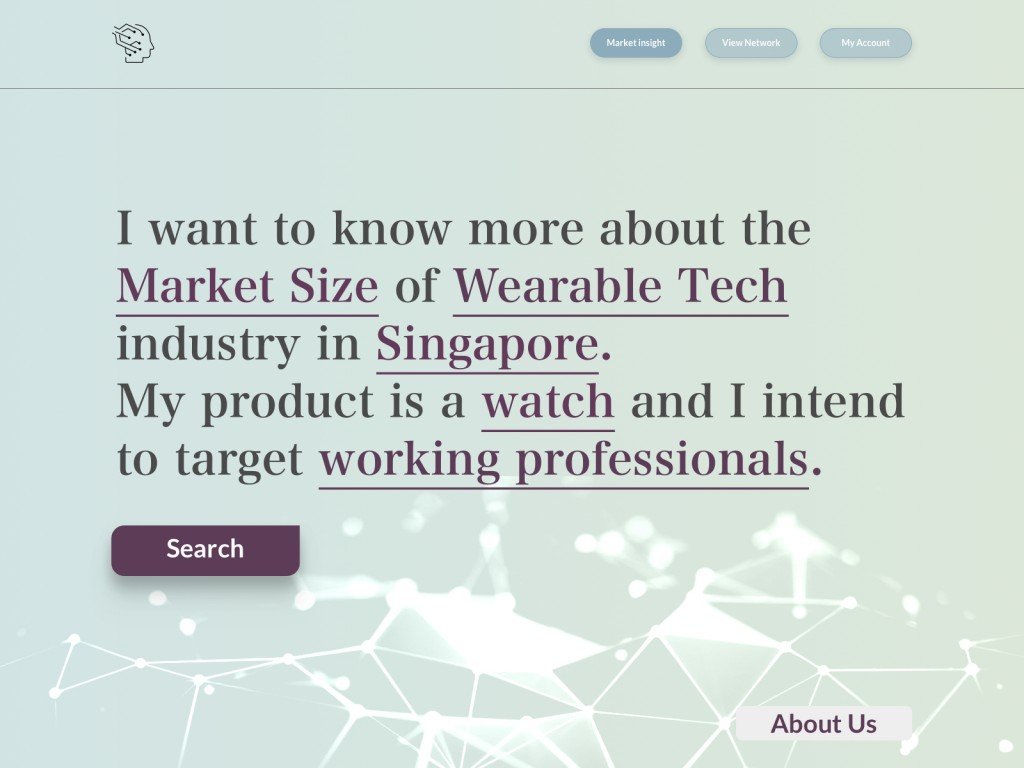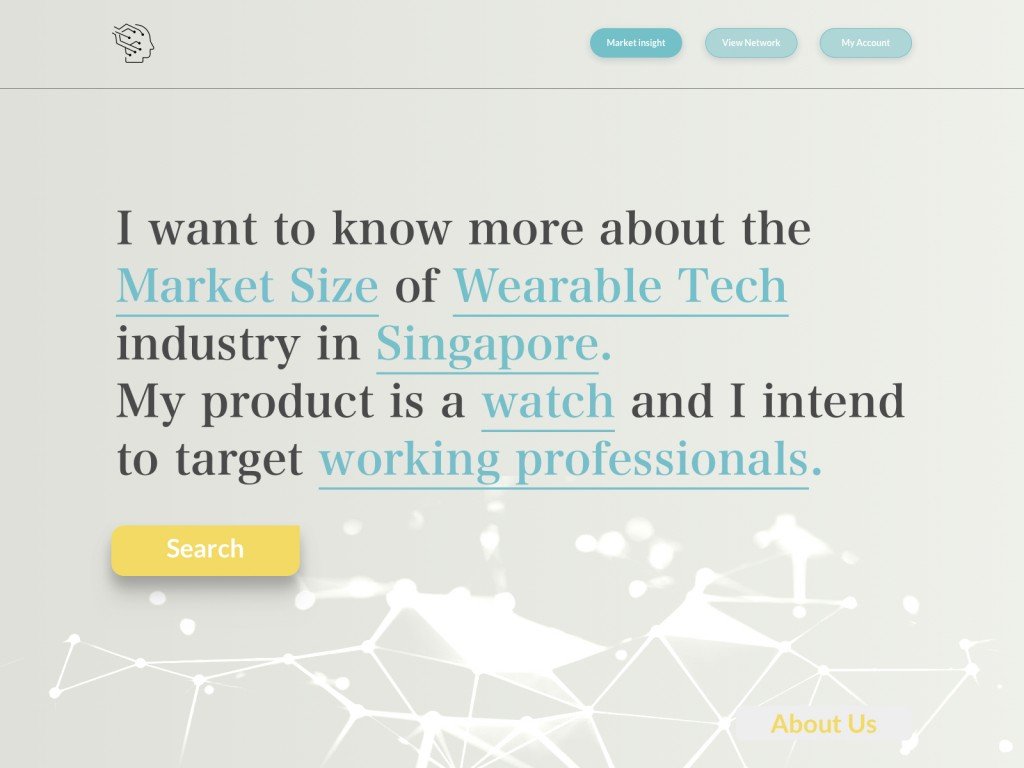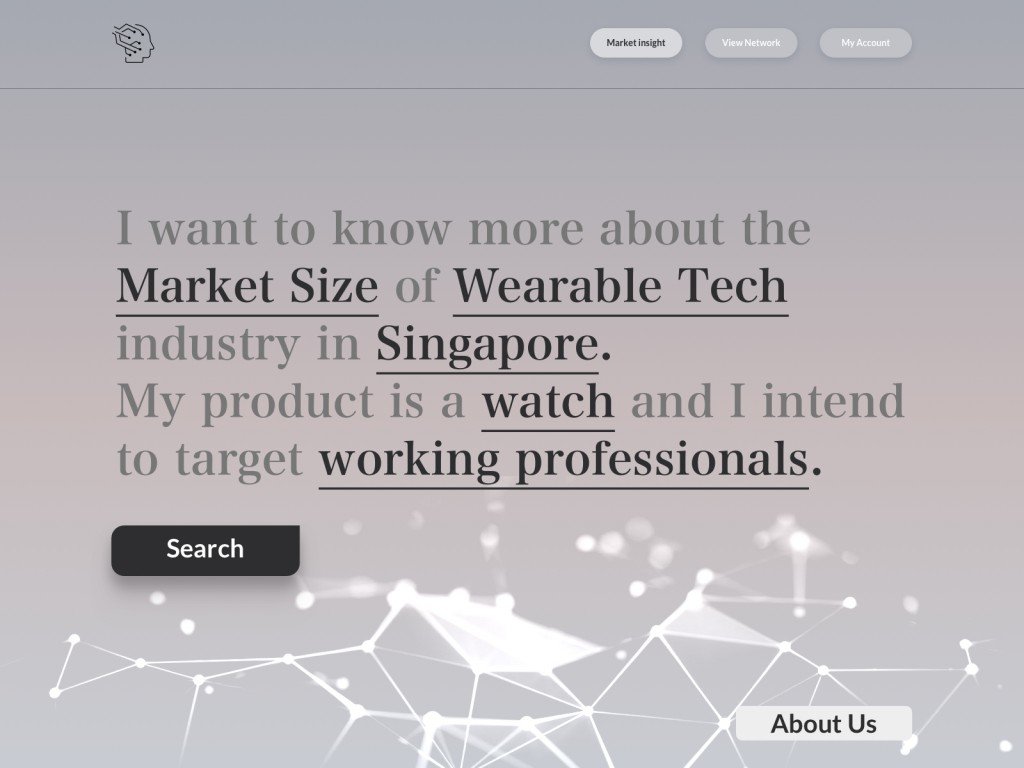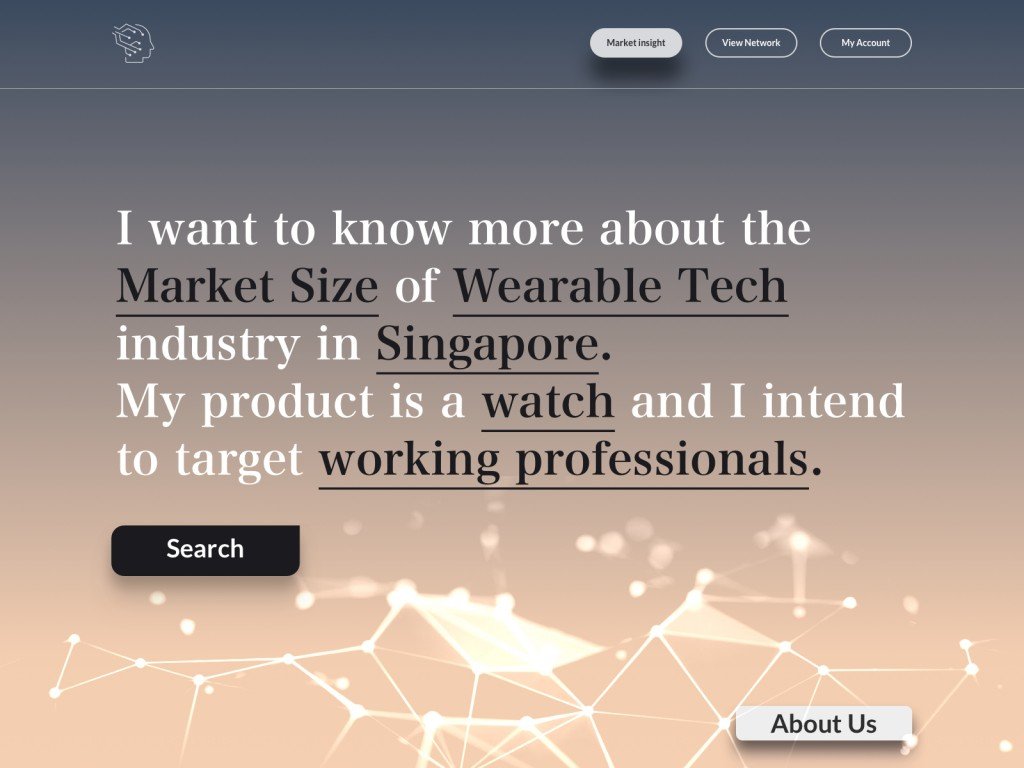Cerebro MVP: County intelligence
Gorden gecko said it best. “the most important commodity I know of is, information”.
Having the ability to gain market insights for a region you are intending to move into gives you a better understanding of how & when to make the correct moves. This is how Project Cerebro was at first initiated. The demand and need for a ‘one-stop’ information portal for companies ambition’s to expand into overseas markets, including those from overseas that have the intention to be present in Singapore.
From the initial interviews conducted we found that.
These companies often find themselves working in the ‘blind’, not having reliable or good information (data) to take the first right steps venturing abroad.
Through Project Cerebro, with the help of AI and data analytics tools, companies can have tools to make better-informed business decisions quickly enabling themselves to make a successful foray into a new market with the latest and most up-to-date information at hand.
When looking at how best to give this information to the user we looked at what currently exists in the market. This primarily consists of large PDF documents that the user must then scan through to get the relevant knowledge that relates to them. This experience can be laborious and time-consuming.




Using the personas as our guide we seen that our users were people that were outgoing and liked to communicate when finding information. This was the definition of our modality in the form of a conversation users could get the information they required. The concept was defined that using AI to scan the documents for information the delivery mechanism would be in the form of a chatbot.
Looking at the rationale for bots was not because of it being the current trend. This direction was made purely on the outcome of what bots are best at doing. Defining intent. Simply put, intents are the intentions of the end-user, these intentions or intents are conveyed by the user of the bot.
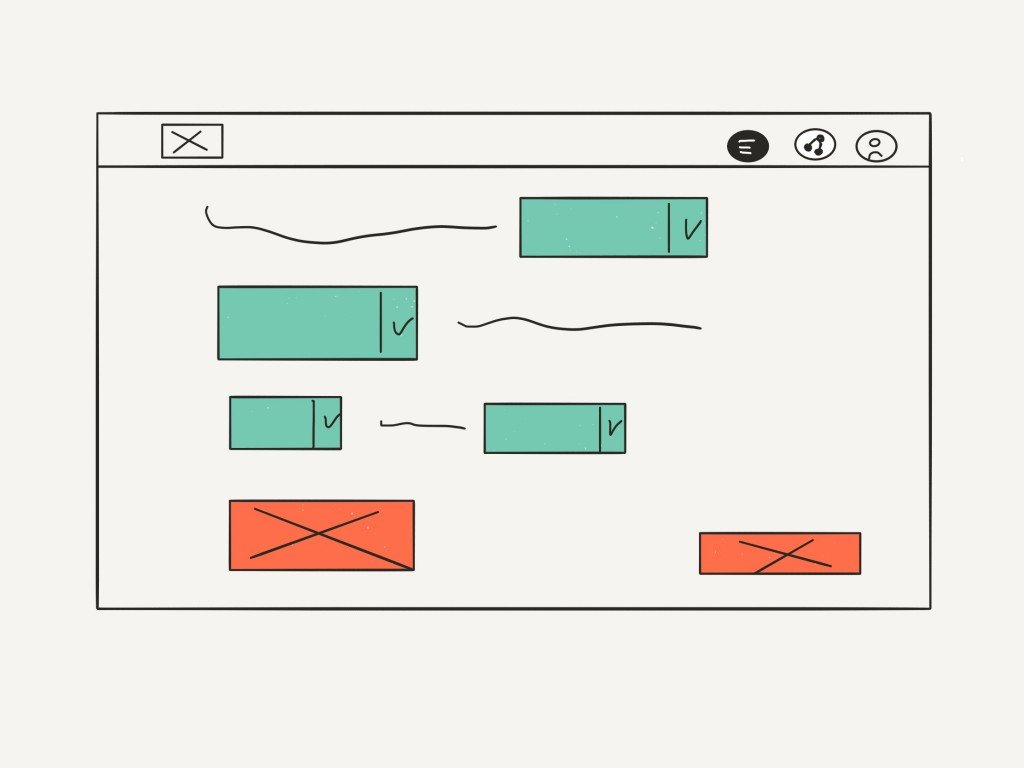


In further research, we defined that intent within bot’s is defined in two ways. casual (how are you today) and business (what are the tax issues in Vietnam)
The entire experience is rooted in transparency. People demand transparency from virtually every aspect of life and more so when they are trying to get relevant, locational & context-sensitive information. With the bot’s intent defined, we went about crafting flows on how this would be achieved
After we had a working flow and concept we needed to prove that the hypotenuse was correct that delivering this level of information to users by parsing the data in a more relaxed and easy way. Numerous eye movement tracking sessions were conducted to understand the user’s focal point of concentration.



This helps us see what content do users prioritized, focused on and what gets overlooked. It was clear from the interviews that users had issues trusting the data that was given back to them, as they could feel it was generated from a computer. Elements of the uncanny valley were being displayed from user’s feedback.
This was most appropriate in the user’s reaction to the waiting time. The systems Passive waiting, lost trust in users. The best outcome to gain user’s trust in the information being displayed was to use.
Active waiting interaction gives the user control over the information. This was visualized using a NIP interface.



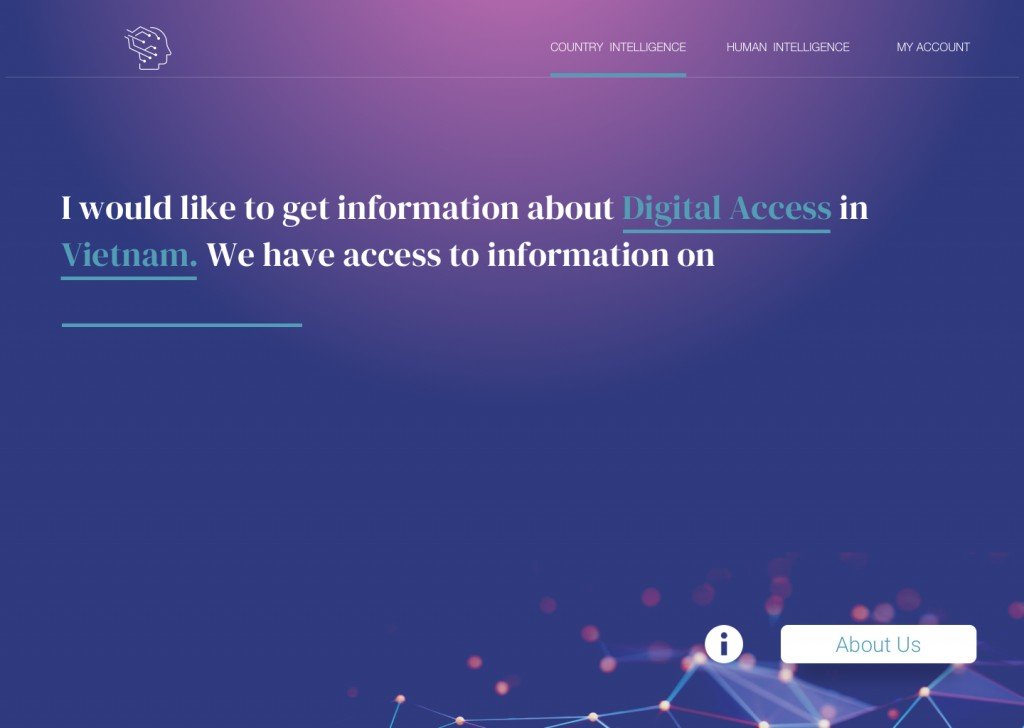


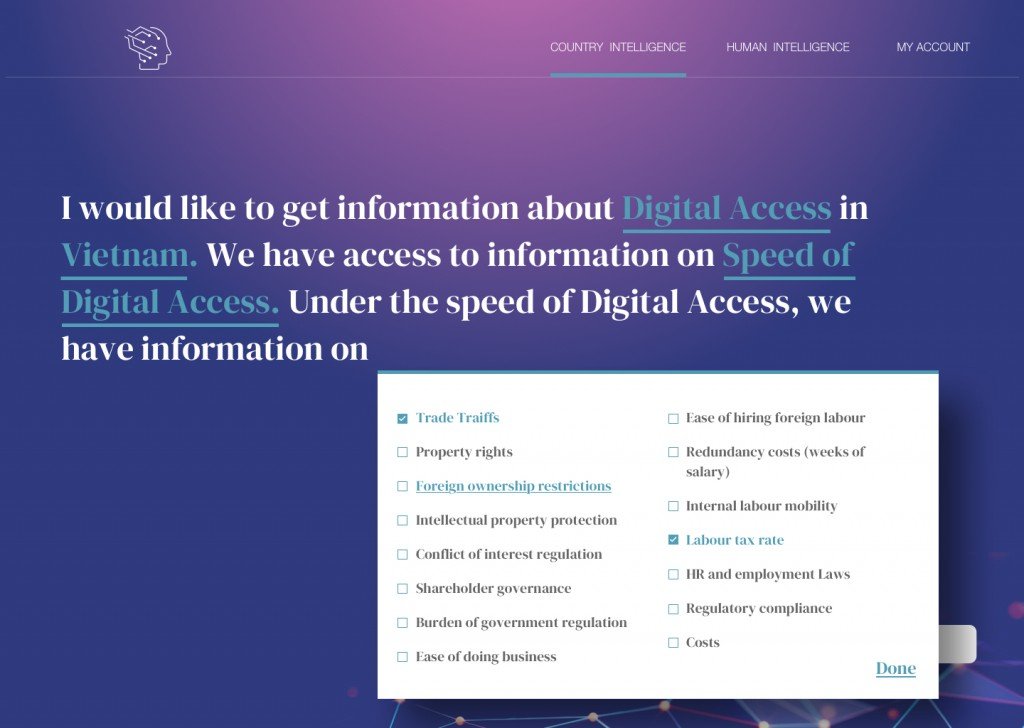

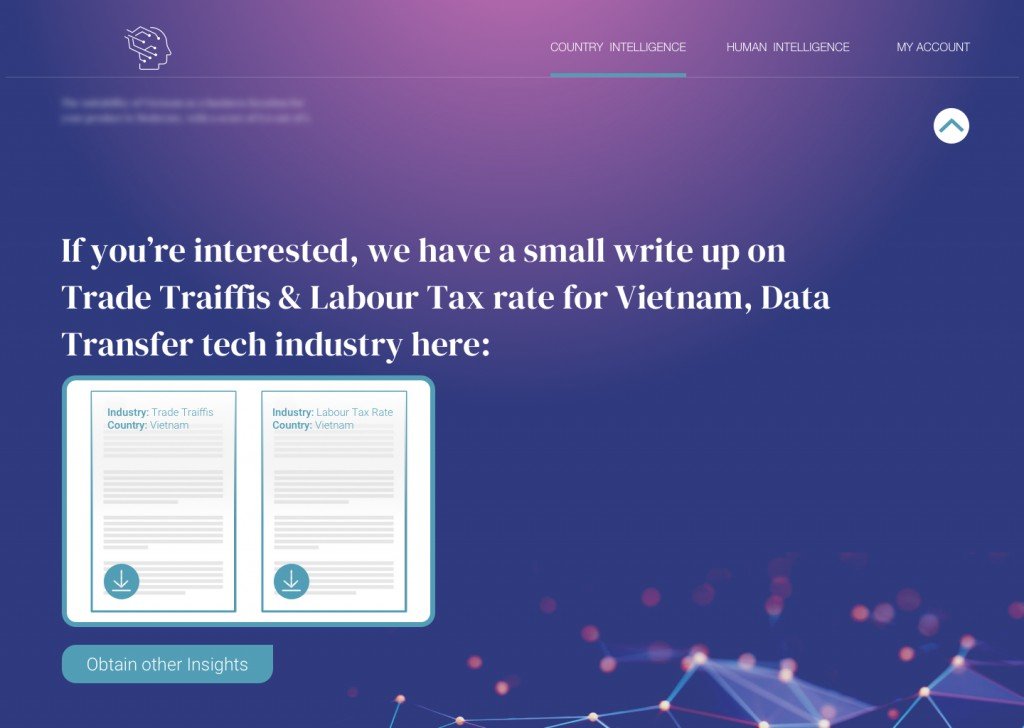

Natural language processing allows the user at each time that state changes, to have a brief moment of active waiting as they start to process the information presented to them, giving them context about what is eventually going to arrive.
Further user’s feedback from NIP’s gradual display of information, had a better retention rate of effectiveness, efficiency & satisfaction.


